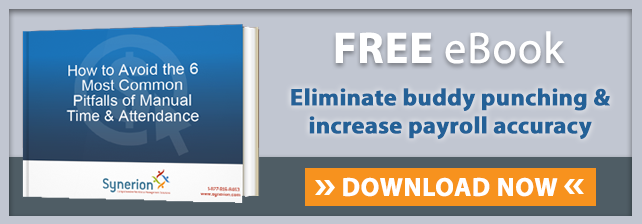 Most companies have some kind of time and attendance tracking. It is generally used to track if an employee is at work, sick or on vacation and as a basic tool to gauge worker productivity. Because this data appears to limited in scope, many think there’s little reason to put time and effort into ensuring this data is reliable and accurate.
Most companies have some kind of time and attendance tracking. It is generally used to track if an employee is at work, sick or on vacation and as a basic tool to gauge worker productivity. Because this data appears to limited in scope, many think there’s little reason to put time and effort into ensuring this data is reliable and accurate.
But in reality time and attendance data can reveal much more about your company than these basic metrics. If you know how to use this data and have a workforce management software to help you analyze it, there are so many applications for your business. Here are 4 unexpected ways you can use it to have a real impact.
Compliance with Workplace Regulations
If you have accurate and complete time and attendance data, it can provide solid evidence that your business is compliant with any labour regulation in your jurisdiction. For example, regulations involving family or medical leave involve a lot of record keeping and tracking. Accurate time and attendance data reduce your risk of fines in case any disputes arise.
Better Scheduling
For many businesses like retail, manufacturing and healthcare, scheduling is not easy. You need to make sure you are adequately staffed at all times, have people with the right skills available and ensure that you don’t wind up paying a staff member far too much overtime. Coupled with a workforce management software, time and attendance data can accomplish this crucial task automatically for you, taking the guesswork out of your scheduling.
Better Distributed Workloads
With accurate time and attendance data, there are a lot of applications related to the ensuring all members of staff are performing a similar amount of work and none are completing excessive amounts of overtime. Although this data can be gathered manually, a workforce management software is especially important. You can match staffing levels to work demand, better manage unpredicted peaks in workflow and all while staying within a labour budget framework.
Business Forecasting and Decision Making
Finally, this kind of data can play a critical role in your long-term business forecasting. Are you ramping up plans for a major expansion and need to decide how many new staff to hire? You can use accurate time data to calculate exactly how many people you should bring on or how to allocate your current labour force. A workforce management software can calculate all of this for you automatically, making it easy to analyze this data and create reports for key decision makers.
